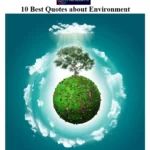
Introduction – Java Design Patterns
Design patterns play a crucial role in software development as they provide proven solutions to recurring design problems. Java, being one of the most popular programming languages, offers a wide range of design patterns that help developers create robust, maintainable, and scalable applications. In this comprehensive guide, we will explore the fundamental concepts of Java design patterns and delve into some commonly used patterns that every Java developer should be familiar with.
Understanding Design Patterns
Design patterns are reusable solutions that address common design problems in software development. They provide a blueprint for structuring code and organizing classes, making the software more flexible, extensible, and easier to maintain. Design patterns encapsulate best practices and proven architectural approaches that have stood the test of time, allowing developers to leverage the wisdom of experienced practitioners.
Categories of Java Design Patterns
Java design patterns can be categorized into three main groups:
1. Creational Patterns
Creational patterns focus on object creation mechanisms, providing flexibility in creating objects while decoupling the client code from the specific classes. Some popular creational patterns include:
- Singleton: Ensures that a class has only one instance and provides a global point of access to it.
- Factory: Provides an interface for creating objects, but allows subclasses to decide which class to instantiate.
- Builder: Facilitates the construction of complex objects step by step, allowing the same construction process to create different representations.
2. Structural Patterns
Structural patterns deal with the composition of classes and objects, forming larger structures and simplifying relationships between entities. Some commonly used structural patterns are:
- Adapter: Converts the interface of a class into another interface that clients expect, enabling classes with incompatible interfaces to work together.
- Decorator: Dynamically adds responsibilities to an object by wrapping it in a decorator class, without modifying its core functionality.
- Composite: Composes objects into tree-like structures to represent part-whole hierarchies, allowing clients to treat individual objects and compositions uniformly.
3. Behavioral Patterns
Behavioral patterns focus on communication between objects, defining how they interact and distribute responsibilities. Some widely used behavioral patterns include:
- Observer: Defines a one-to-many dependency between objects, so that when one object changes state, its dependents are automatically notified and updated.
- Strategy: Encapsulates interchangeable algorithms within a family of algorithms, allowing clients to select algorithms dynamically at runtime.
- Command: Encapsulates a request as an object, thereby decoupling the sender from the receiver and providing a way to parameterize clients with different requests.
Benefits of Using Design Patterns
Utilizing design patterns in Java development offers several benefits, including:
- Reusability: Design patterns provide reusable solutions to common problems, reducing code duplication and improving development efficiency.
- Maintainability: By following established patterns, code becomes more organized and easier to understand, debug, and maintain.
- Scalability: Design patterns promote loose coupling and modular design, making it easier to extend and scale applications.
- Code Understandability: Design patterns have a well-defined structure and naming conventions, making it easier for developers to understand and collaborate on projects.
- Code Quality: Design patterns enforce best practices and principles, leading to higher-quality code that is robust, flexible, and resilient.
Conclusion –Java Design Patterns
Design patterns are an essential aspect of Java development, providing reusable and proven solutions to common design problems. By incorporating design patterns into their development process, Java developers can create software that is more maintainable, scalable, and efficient. Understanding and applying design patterns empower developers to write high-quality code that adheres to industry best practices.
LIKE WHAT YOU’RE READING?
CHECK OUT SOME OF OUR OTHER GREAT CONTENT HERE
- DIFFERENT METHODS IN JAVA: A COMPREHENSIVE GUIDE
- MAJOR FEATURES OF JAVA PROGRAMMING LANGUAGE
- PYTHON LAMBDA FUNCTION: A COMPREHENSIVE GUIDE
- ARTIFICIAL INTELLIGENCE (AI) – A BEGINNER’S GUIDE
- HOW TO START A CAREER IN ARTIFICIAL INTELLIGENCE?
- WHAT IS MACHINE LEARNING?
- DATA SCIENCE – THE ULTIMATE GUIDE
- TOP 5 BEST SEO TOOLS(2022)
- TOOLS OF MACHINE LEARNING
- 7 MOST POPULAR TOOLS FOR DEEP LEARNING


